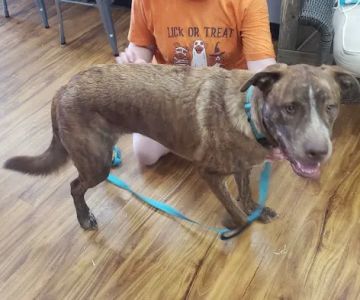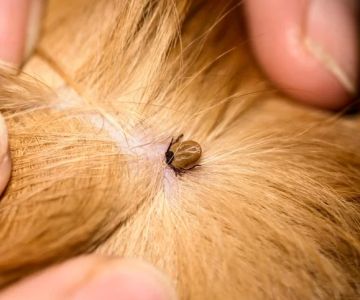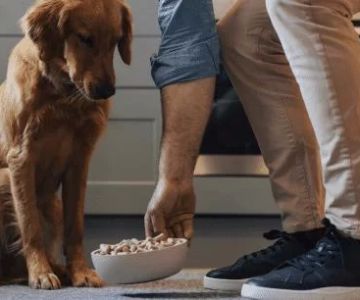- 1- Understanding Why Dogs Chew Furniture
- 2- How to Train Your Dog to Stop Chewing Furniture
- 3- Effective Techniques to Prevent Chewing
- 4- Using Positive Reinforcement in Training
- 5- Providing Alternatives for Chewing
- 6- Real-Life Case Study of a Dog with Chewing Issues
1. Understanding Why Dogs Chew Furniture
Chewing is a natural behavior for dogs, and it’s something they often do from a young age. However, when this behavior turns destructive, particularly in the form of chewing on furniture, it can be a problem for dog owners. Understanding why your dog is chewing on furniture is the first step to solving the issue.
There are several reasons why dogs chew furniture, including:
- Teething: Puppies, in particular, chew as they are teething. Chewing helps relieve the discomfort they experience as their teeth come in.
- Separation Anxiety: Some dogs chew furniture when they are left alone. This is often a sign of separation anxiety, where the dog feels stressed or anxious when their owner is not around.
- Boredom: Dogs who aren’t mentally or physically stimulated may resort to chewing as a way to pass the time and alleviate boredom.
- Exploration: Dogs, especially puppies, may chew to explore their environment. They use their mouths to learn about objects, and this curiosity can lead to furniture destruction.
- Attention-Seeking: Some dogs chew on furniture because they know it will get their owner’s attention, even if it’s negative.
Identifying the root cause of the chewing behavior is key to addressing it. Whether it's due to anxiety, boredom, or teething, understanding why your dog is chewing furniture allows you to tailor your training approach to better suit your dog's needs.
2. How to Train Your Dog to Stop Chewing Furniture
Training your dog to stop chewing furniture requires patience, consistency, and a clear strategy. Here are the basic steps to get started:
- Redirect Their Attention: One of the simplest and most effective ways to stop destructive chewing is by redirecting your dog’s attention. If you catch your dog chewing on furniture, immediately offer them a chew toy or another acceptable item. Over time, they will learn that toys are appropriate to chew, not furniture.
- Use Deterrents: There are sprays available that are designed to deter dogs from chewing on furniture. These sprays usually have a bitter taste that dogs find unpleasant. Spray these deterrents on the areas where your dog typically chews to make them less appealing.
- Consistent Commands: Training your dog to understand commands like “leave it” or “no chew” is important. Every time they start to chew furniture, immediately say the command in a firm but calm voice. When they stop, praise them. Consistency is key in helping your dog understand what is expected.
- Manage Your Dog’s Environment: If your dog is chewing furniture due to boredom or anxiety, it’s important to manage their environment. Ensure they have enough mental stimulation, exercise, and access to chew toys. You can also crate-train them when you’re not home to prevent them from engaging in destructive behaviors.
Training takes time, so it’s important to stay patient and consistent. Over time, your dog will start to understand that chewing furniture is not acceptable, and they will choose other outlets for their energy.
3. Effective Techniques to Prevent Chewing
In addition to training, there are several techniques you can use to prevent chewing from becoming a problem in the first place. These methods are especially helpful for puppies, but they can work for dogs of all ages.
- Provide Regular Exercise: One of the best ways to prevent chewing is to ensure that your dog gets enough physical and mental exercise. Take them for walks, engage in playtime, and provide activities that challenge their mind, like puzzle toys or treat dispensers.
- Provide Chew Toys: Give your dog a variety of chew toys to satisfy their natural chewing instincts. Chew toys can keep them occupied and help prevent them from turning to furniture. Make sure the toys are durable and safe for your dog’s size and breed.
- Routine and Structure: Dogs thrive on routine. Establish a consistent schedule for feeding, walks, and playtime. Having a predictable routine can reduce anxiety and prevent destructive behaviors caused by uncertainty or boredom.
- Training Classes: If you’re struggling to manage your dog’s chewing behavior on your own, consider enrolling them in a dog training class. A professional trainer can offer guidance and teach you effective techniques to address the behavior.
By implementing these techniques, you can significantly reduce your dog’s inclination to chew furniture and promote more positive behaviors in your pet.
4. Using Positive Reinforcement in Training
Positive reinforcement is a powerful training tool that encourages dogs to repeat good behavior. Instead of punishing your dog for chewing furniture, focus on rewarding them for choosing appropriate chew toys or following commands like “leave it.” Positive reinforcement strengthens the bond between you and your dog and helps build trust.
Here’s how to use positive reinforcement to stop chewing:
- Reward with Treats: Whenever your dog chooses their chew toy over furniture, reward them with a treat. This reinforces the idea that chewing toys leads to positive outcomes.
- Praise and Attention: Along with treats, give your dog lots of praise when they stop chewing on furniture. Verbal praise like “Good job!” or “Good boy/girl!” lets them know they’re doing something right.
- Consistency is Key: Every time your dog chooses the correct behavior, be sure to reward them. Consistent reinforcement will help them learn faster and solidify good habits.
Positive reinforcement works because it motivates dogs to repeat behaviors that lead to rewards. This method is not only effective for stopping destructive chewing but also for reinforcing other good behaviors like sitting, staying, and following commands.
5. Providing Alternatives for Chewing
Dogs naturally have a desire to chew, so providing them with acceptable alternatives is essential in managing this behavior. Giving your dog options that satisfy their chewing instincts can reduce the likelihood of them turning to furniture or other undesirable items. Here are some alternatives you can provide:
- Chew Toys: Invest in a variety of chew toys that are designed for your dog’s size and breed. Consider different textures, shapes, and materials to keep things interesting for your dog.
- Edible Chews: Edible chews like bully sticks, rawhide, or dental chews can provide your dog with a satisfying chewing experience while helping to clean their teeth.
- Interactive Toys: Puzzle toys or treat-dispensing toys can engage your dog mentally and keep them occupied for extended periods. These toys are especially helpful for dogs that chew out of boredom.
By providing your dog with plenty of alternatives, you can reduce the temptation to chew on furniture and keep them occupied with more appropriate items.
6. Real-Life Case Study of a Dog with Chewing Issues
My friend Sarah had a Labrador retriever named Max who was notorious for chewing on furniture, especially when left alone. Max’s chewing behavior started when he was a puppy, but it only worsened as he got older. After trying several solutions without success, Sarah decided to take Max to a professional dog trainer.
The trainer assessed Max’s behavior and discovered that his chewing was due to separation anxiety. The trainer recommended a combination of crate training, providing chew toys, and gradually desensitizing Max to being left alone. With consistent training and positive reinforcement, Max’s chewing behavior significantly improved. Sarah also made sure to exercise Max regularly to reduce his anxiety and stress.
Now, Max is much calmer, and his chewing has become minimal. Sarah credits the combination of training, exercise, and providing appropriate chew toys as the key factors in resolving his behavior.











